Mercator Projection Uses
What is a Mercator projection and what is its purpose. Other projections such as UTM and State Plane are designed for focused areas of the globe in order to keep the distortion minimal.
Street mapping services such as Google Maps Bing Maps MapQuest etc use a Mercator called Web Mercator for their map images.
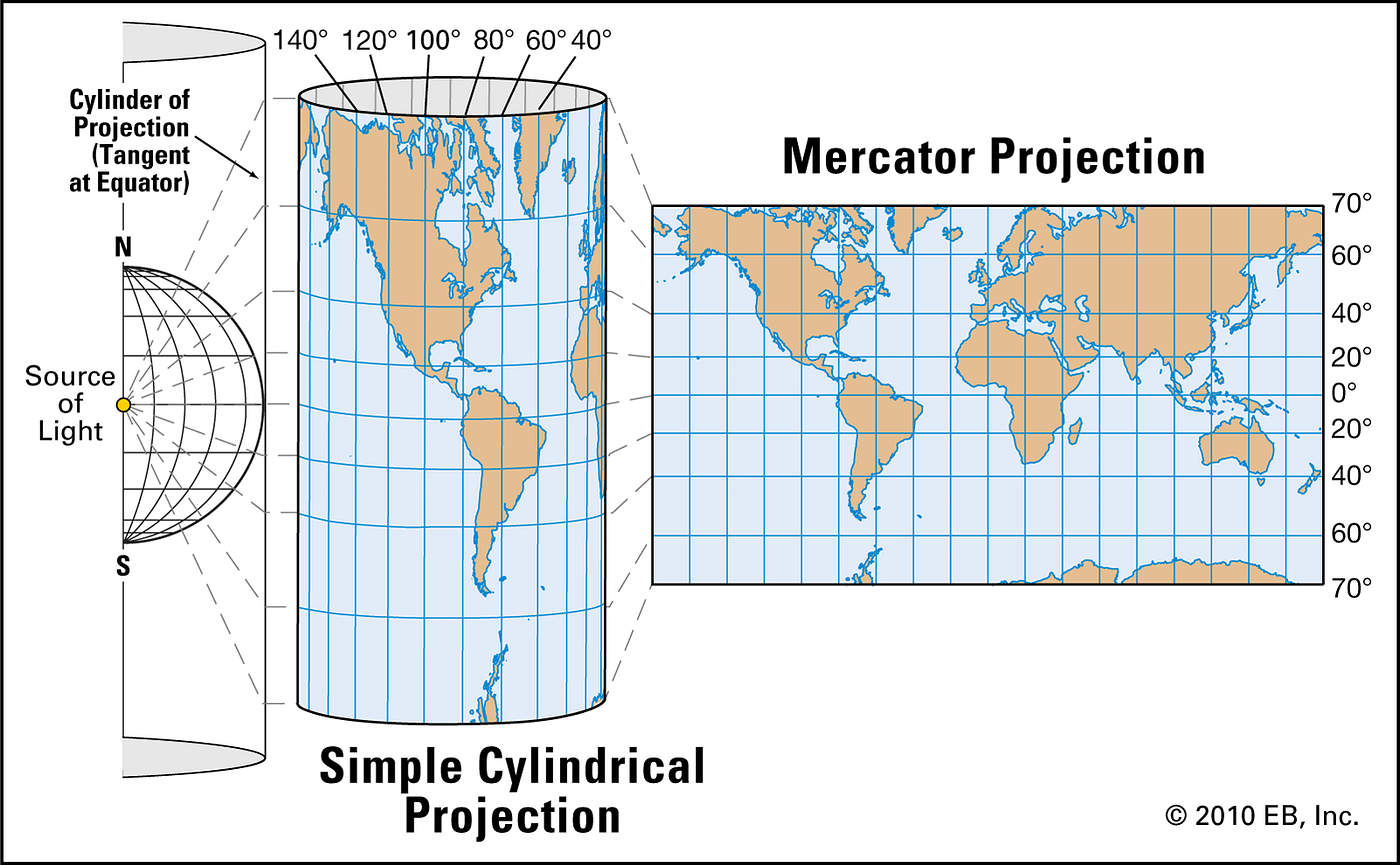
Mercator projection uses. The transverse Mercator map projection is an adaptation of the standard Mercator projection. The Mercator projection is more accurate for areas closer to the equator and less accurate for area closer to poles. Drag and drop countries around the map to compare their relative size.
Uses of Mercator Projection The Mercator projection is significant for navigation and almost every marine chart is based on it. The modified Mercator projection used by Google Bing and ArcGIS Online is not designed to minimize distortion at all. USA Europe and Australia.
It uses a horizontally oriented cylinder tangent to a Meridian. De projectie is een belangrijk speciaal geval van de hoekgetrouwe cilinderprojectieDit wil zeggen dat de hoeken tussen verschillende richtingen op de kaart gelijk zijn aan de hoeken tussen die richtingen op het. The National Geographic Society seems to be the only group that I know of taking steps forward and abandoning the 500-year old Mercator Projection.
Google Maps uses the traditional Mercator system. Mercator himself used the equal-area sinusoidal projection to show relative areas. They use the Winkel tripel Projection system which is neither area-equal like the Peter Projection nor conformal like the Mercator projection.
This method is useful for specific climatological maps and marine charts because it creates a display that offers features that are easier to read for the average person. Is Greenland really as big as all of Africa. At first Google Maps did not use this projection and as a consequence in cities at high latitudes right angles could not be maintained on roads and the like.
This map projection is practical for nautical applications due to its ability to represent lines of constant course known as rhumb lines as straight segments that conserve the angles with the meridians. Google Maps mainly uses the Mercator projection because it allows to preserve the angles. You may be surprised at what you find.
This projection is widely used for navigation charts because any straight line on a Mercator projection map is a line of constant true bearing that enables a navigator to plot a straight-line course. It became the standard map projection for navigation because it is unique in representing north as up and south as down everywhere while preserving local directions and shapes. Projection Type Key virtues Comments.
This is particularly useful for mapping large areas that are mainly north-south in extent. Although the Mercator projection is still used commonly for navigation due to its unique properties cartographers agree that it is not suited to general reference world maps due to its distortion of land area. Mercator projection is the display of a map of the world onto a cylinder in a way where all of the parallels of latitude have the same length as the equator.
Created before 150 AD Best Used in areas over the Poles or for small scale continental mapping. It is less practical for world maps however because the scale is distorted. Instead it was engineered for convenience in working with cached map tiles.
The Mercator projection is a cylindrical map projection presented by the Flemish geographer and cartographer Gerardus Mercator in 1569. De normale conforme projectie of mercatorprojectie is een kaartprojectie die genoemd is naar de Vlaamse cartograaf Gerardus Mercator die deze projectie in 1569 introduceerde. A great tool for educators.
The Mercator projection was designed by its creator for shipboard use the title of the original map telling us as much. It is a method by which the spherical globe of the Earth can be represented with errors on a flat map - which are required by atlases charts etc. The Mercator projection mərˈkeɪtər is a cylindrical map projection presented by Flemish geographer and cartographer Gerardus Mercator in 1569.
The transverse version is widely used in national and international mapping systems around the world including the Universal Transverse Mercator. Created in 1772 Best Used in mid-latitudes eg. See Spatial Reference SR-ORG6928 and Spatial Reference SR-ORG7483.
Mercator himself used the equal-area sinusoidal projection to show relative areas. Nova et aucta orbis terrae description ad usum navigantium emendate et accomodata new and improved description of the world amended and. As a result of these criticisms modern atlases no longer use the Mercator projection for world maps or for areas distant from the equator preferring other cylindrical projections or forms of equal-area projection.
The projection used for all tiled base map services in The National Map is the World Geodetic System 1984 WGS 84 Web Mercator Auxiliary Sphere so that base map services can be used in combination with other common viewers. Areas farther away from the Equator appear disproportionately large. Transverse Mercator Projection Lambert introduced the Transverse Mercator in 1772.
Map Projections Mercator Vs The True Size Of Each Country Brilliant Maps

Mercator Projection An Overview Sciencedirect Topics
Cropping The Mercator Projection Brian Amos
Using The Mercator Map Projection Maphover Interactive World Maps

Which Is The Best Map Projection

Which Is The Best Map Projection

Transverse Mercator Arcmap Documentation
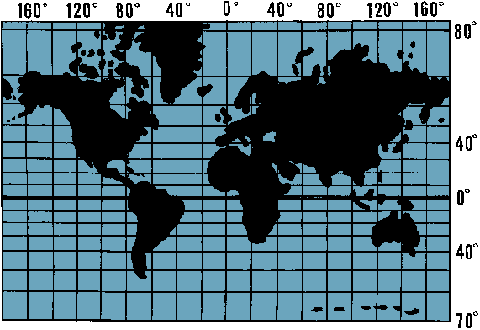
Mercator Projection Definition Of Mercator Projection By Merriam Webster

A Look At The Mercator Projection Gis Lounge
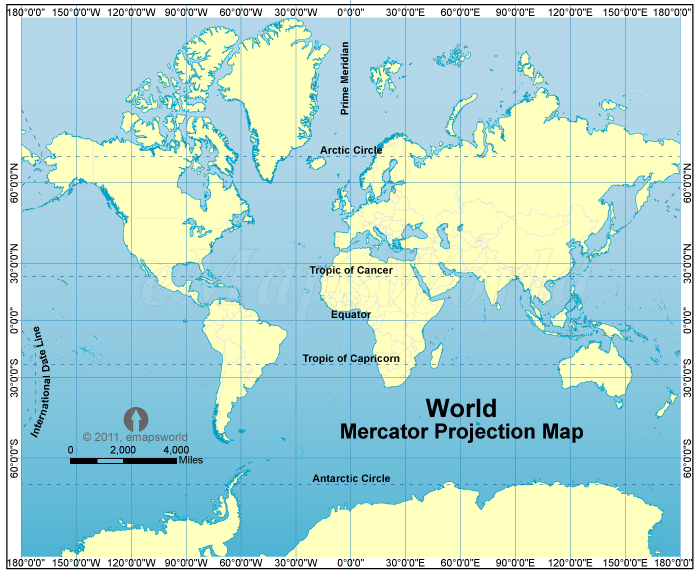
Mercator Maps Use And Criticism Kaiserscience
Mercator Projection V Gall Peters Projection
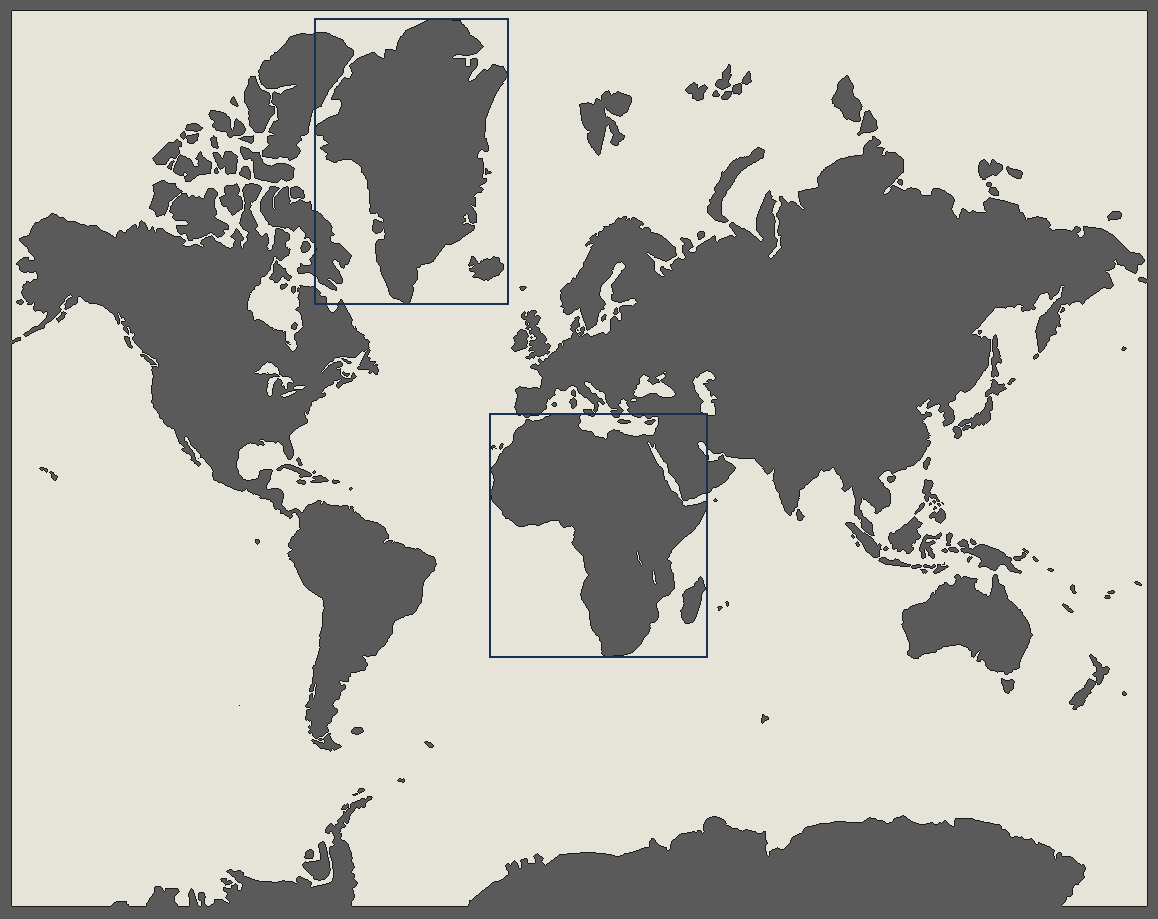
On The Ongoing Ubiquity Of The Mercator Projection By Pascal Sommer Medium

Uses And Misuses Of The Mercator Projection Geocurrents

All The Maps Of The World Are Wrong By Kevin Shah Illumination Medium

Mercator Projection An Overview Sciencedirect Topics




Post a Comment for "Mercator Projection Uses"